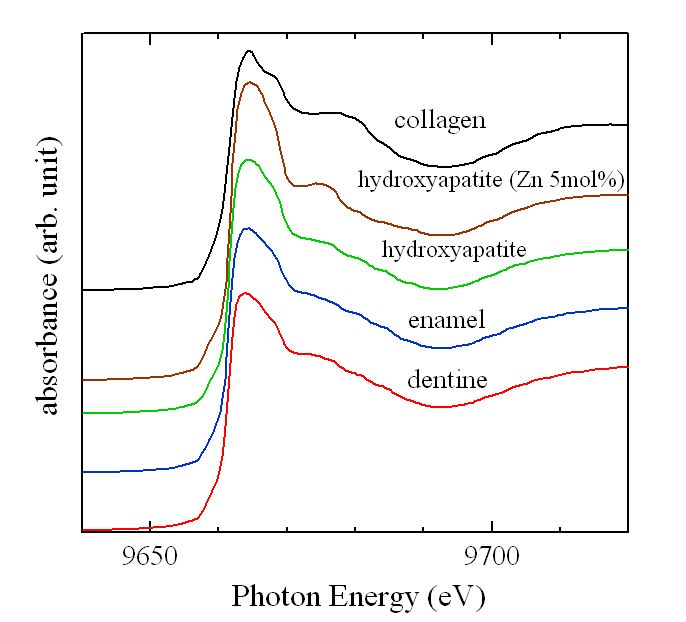XAFS analysis of dentine treated with zinc compounds
Inquiry number
SOL-0000000893
Beamline
BL19B2 (X-ray Diffraction and Scattering II)
Scientific keywords
| A. Sample category | |
|---|---|
| B. Sample category (detail) | biological material |
| C. Technique | absorption and its secondary process |
| D. Technique (detail) | XAFS, XANES |
| E. Particular condition | polarization (linear), room temperature |
| F. Photon energy | X-ray (4-40 keV) |
| G. Target information | local structure, trace element |
Industrial keywords
| level 1---Application area | Pharmaceuticals, Chemical product, others |
|---|---|
| level 2---Target | health care(shampoo, cosmetics,dental paste) |
| level 3---Target (detail) | organism |
| level 4---Obtainable information | local structure, adsorption |
| level 5---Technique | XAFS |
Classification
A80.60 food、daily necessaries, M40.10 XAFS
Body text
In this solution, Zn K-edge XANES technique was applied to dentine that had been treated with zinc compound to analyze the local structure around zinc atoms in dentine. The local structure around the target atom is revealed by comparing the XANES spectrum of the sample with those spectra of reference samples. These data reveal the fact that the most of zinc atoms were attached to hydroxyapatite and not to collagen.
Zn K-edge XANES spectra of dentine
Source of the figure
Private communication/others
Description
本間作
Technique
XANES is a unique technique to study electronic state and local structure. The technique is applicable to crystal, amorphous, liquid contained a very small quantity of elements and provides knowledge about valence and local structure of the element.
Source of the figure
No figure
Required time for experimental setup
2 hour(s)
Instruments
| Instrument | Purpose | Performance |
|---|---|---|
| XAFS | acquisition of XAFS spectrum | 3.8keV-72keV |
References
| Document name |
|---|
| X線吸収分光法-XAFSとその応用-太田俊明編 |
Related experimental techniques
XMCD
Questionnaire
This solution is an application of a main instrument of the beamline.
Ease of measurement
Middle
Ease of analysis
Middle
How many shifts were needed for taking whole data in the figure?
Less than one shift
